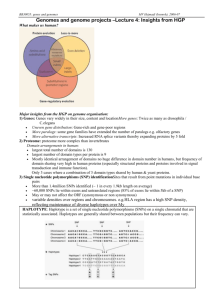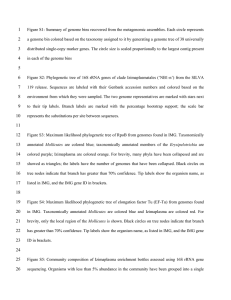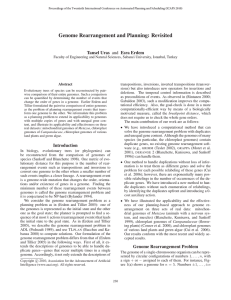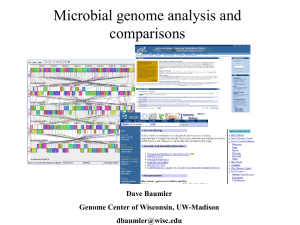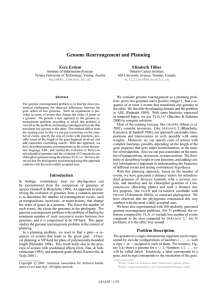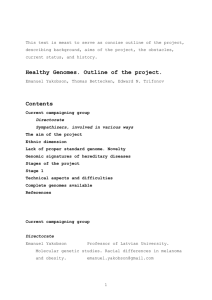Organisation of the human genome
advertisement
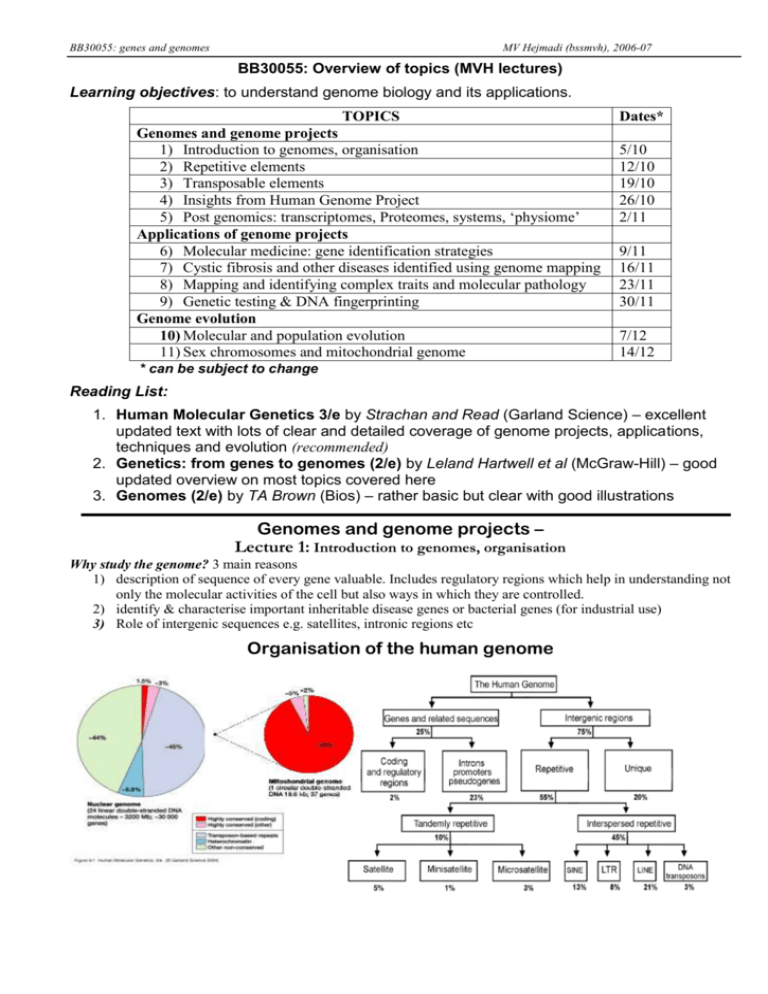
BB30055: genes and genomes MV Hejmadi (bssmvh), 2006-07 BB30055: Overview of topics (MVH lectures) Learning objectives: to understand genome biology and its applications. TOPICS Genomes and genome projects 1) Introduction to genomes, organisation 2) Repetitive elements 3) Transposable elements 4) Insights from Human Genome Project 5) Post genomics: transcriptomes, Proteomes, systems, ‘physiome’ Applications of genome projects 6) Molecular medicine: gene identification strategies 7) Cystic fibrosis and other diseases identified using genome mapping 8) Mapping and identifying complex traits and molecular pathology 9) Genetic testing & DNA fingerprinting Genome evolution 10) Molecular and population evolution 11) Sex chromosomes and mitochondrial genome Dates* 5/10 12/10 19/10 26/10 2/11 9/11 16/11 23/11 30/11 7/12 14/12 * can be subject to change Reading List: 1. Human Molecular Genetics 3/e by Strachan and Read (Garland Science) – excellent updated text with lots of clear and detailed coverage of genome projects, applications, techniques and evolution (recommended) 2. Genetics: from genes to genomes (2/e) by Leland Hartwell et al (McGraw-Hill) – good updated overview on most topics covered here 3. Genomes (2/e) by TA Brown (Bios) – rather basic but clear with good illustrations Genomes and genome projects – Lecture 1: Introduction to genomes, organisation Why study the genome? 3 main reasons 1) description of sequence of every gene valuable. Includes regulatory regions which help in understanding not only the molecular activities of the cell but also ways in which they are controlled. 2) identify & characterise important inheritable disease genes or bacterial genes (for industrial use) 3) Role of intergenic sequences e.g. satellites, intronic regions etc Organisation of the human genome BB30055: genes and genomes MV Hejmadi (bssmvh), 2006-07 Polypeptide coding regions Gene organisation: Rare bicistronic units Non-polypeptide-coding: RNA encoding Pseudogenes () Non processed pseudogenes Gene fragments: Processed pseudogenes Reading: Chapter 9 pp 265-268 HMG 3 by Strachan and Read OR Chapter 10: pp 339-348 Genetics by Hartwell et al (2/e)





